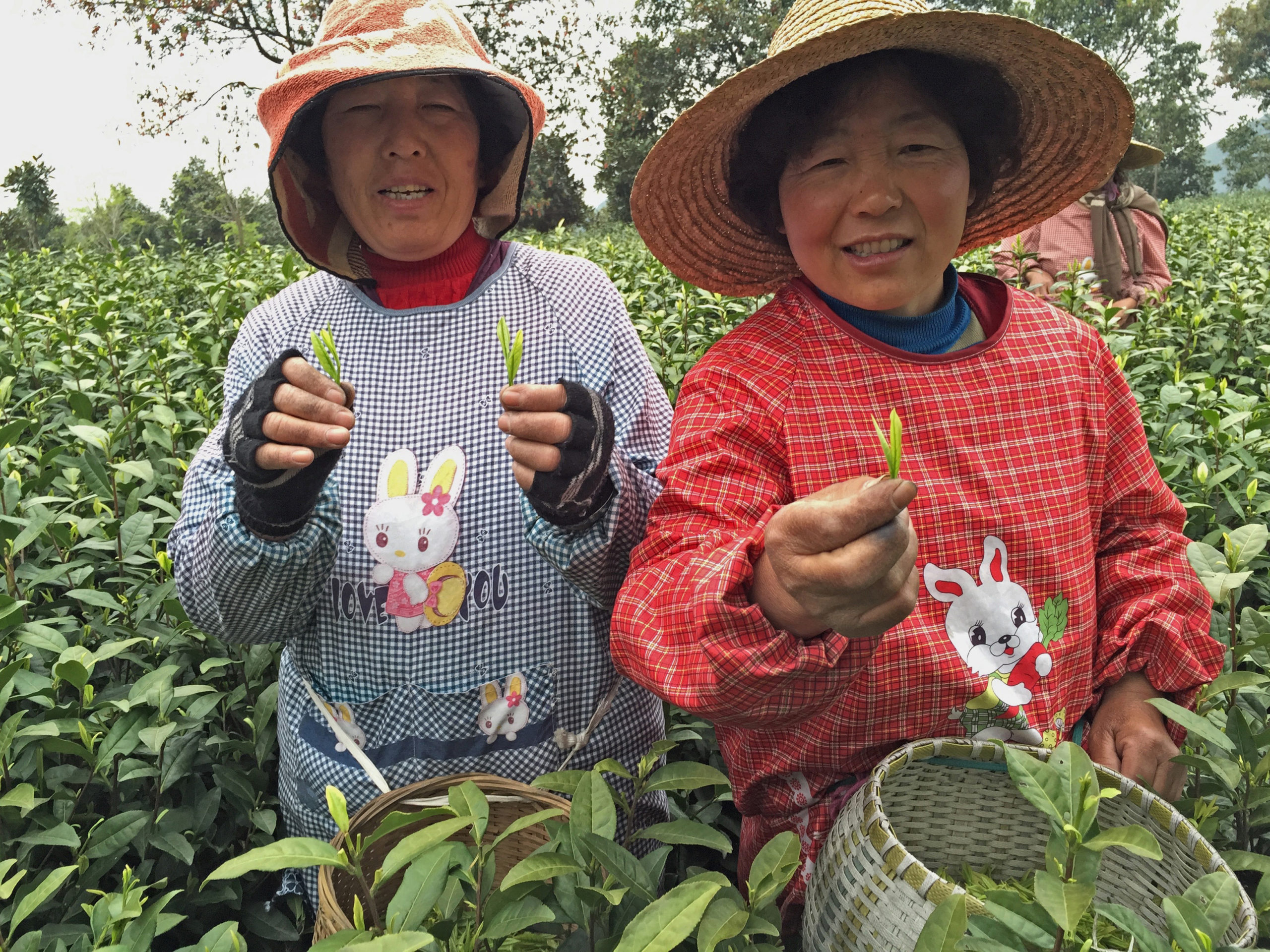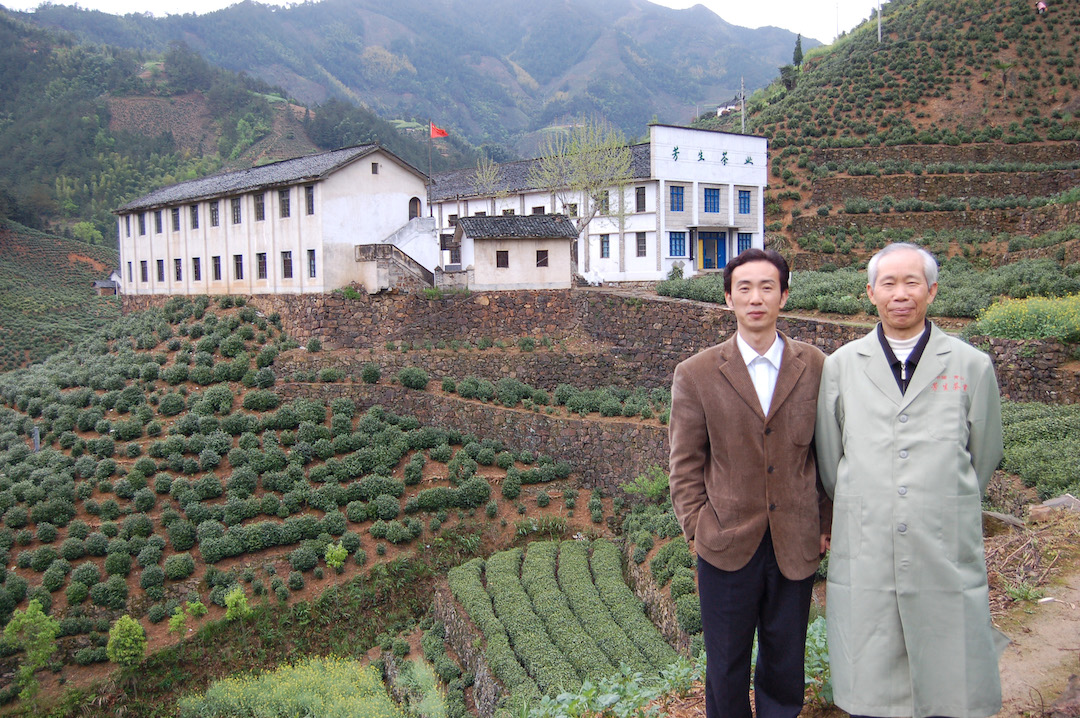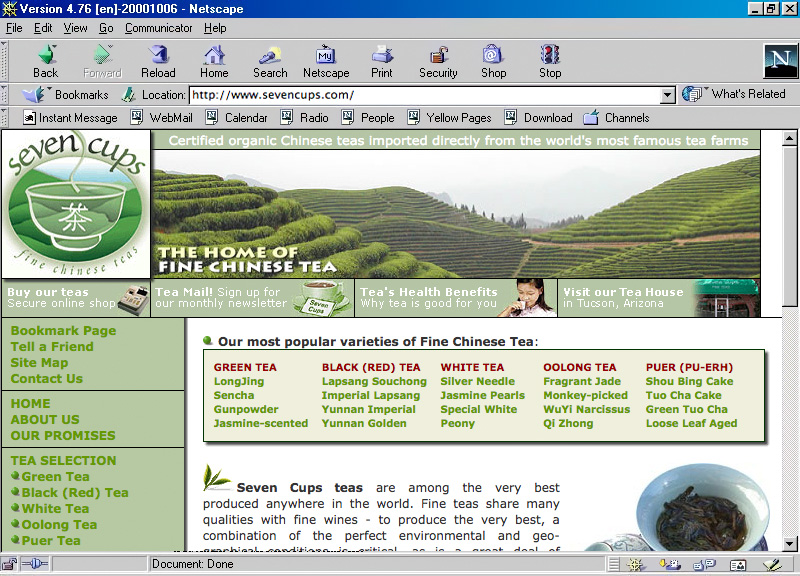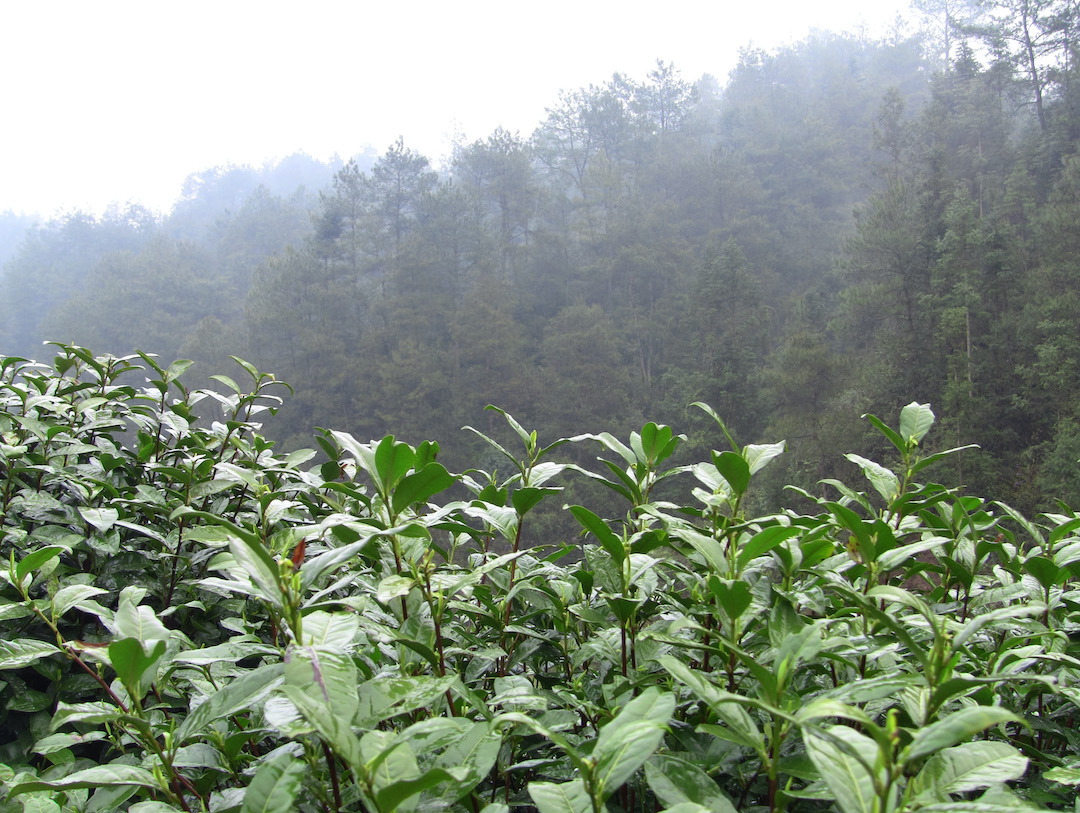Newsletter Archive Oct. 28, 2022

This November marks a full 20 years since Seven Cups officially started business. Let’s honor the occasion by going back to where we started: green tea.
We’re showcasing four green teas: the prestigious Xishan Bi Luo Chun, the little champion Mengding Maofeng (Feather Peak), the singular and inimitable Ming Qian Anji Baicha (Early Harvest Anji), and the most delicate green tea in our whole catalog, Huangshan Maofeng (Yellow Mountain).
This lineup represents a cross section of green tea terroir. Each tea is from the soil of a different province and each is grown from the old heirloom landrace plants of their origin (or in Anji Baicha’s case, a cultivar developed from Anji county’s local landrace). They span the highly limited and exclusive to the everyday special.

Seven Cups launched into business in 2002 when Austin purchased his first chests of tea, all green teas, from the Zhejiang countryside. Austin had already been working on the project for some years, though it was—in today’s parlance—a side-hustle. Austin’s friends on both sides of the Pacific couldn’t believe he was leaving a career as a consultant in database programming to sell green tea to Americans. Despite their misgivings, we ended up finding folks like you—people who are as passionate and interested in tea as we are.
Those first green teas soon found their customers when Austin and Zhuping began selling them in Tucson’s St. Philip’s farmer’s market. We’re honored to still know many of those customers today.
That tea found many customers online, too. Oh yes, we had a webpage. Lo and behold:

We even found our first wholesale customer — an ice cream company making green tea ice cream.
That supportive customer base has allowed us to be among the first, if not the first, company to import and sell certain high-end Chinese green teas that were previously unheard of in the United States. Our first import of Anji Baicha arrived in 2004, for example.
A lot has changed in these two decades, but our buying practices are more or less the same.
We buy exactly once per year—when the tea is at its freshest. We work hard to thread the needle of getting exactly how much tea our customers want to buy and, in some cases, exactly how much our producers can make.
Importing green tea, more than any other style, demands tea from the most recent harvest. It needs impeccable storage and reliable rotation. This is all a lot to manage. Many folks who are selling tea in North America just don’t bother doing it. After 20 years, we’re proud to still be here and still focused on doing it right — and of course, sharing it with you.

